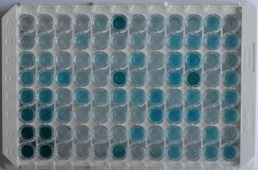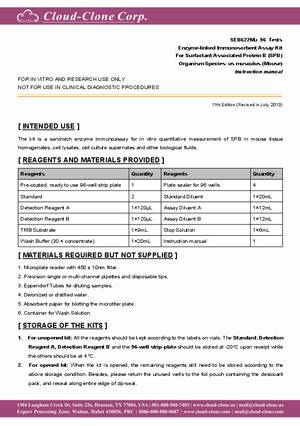Packages (Simulation)

Reagent Preparation

Image (I)
Image (II)
Certificate


ELISA Kit for Surfactant Protein B (SP-B)
SFTPB; PSPB; SFTB3; SFTP3; SPB; Surfactant Associated Protein B; Pulmonary Surfactant Protein B; 18 kDa pulmonary-surfactant protein; 6 kDa protein
- Product No.SEB622Mu
- Organism SpeciesMus musculus (Mouse) Same name, Different species.
- Sample Typetissue homogenates, cell lysates, lung lavage fluid, cell culture supernates and other biological fluids
- Test MethodDouble-antibody Sandwich
- Assay Length3h
- Detection Range0.78-50ng/mL
- SensitivityThe minimum detectable dose of this kit is typically less than 0.30ng/mL.
- DownloadInstruction Manual
- UOM 48T96T 96T*5 96T*10 96T*100
- FOB
US$ 479
US$ 684
US$ 3078
US$ 5814
US$ 47880
For more details, please contact local distributors!
Specificity
This assay has high sensitivity and excellent specificity for detection of Surfactant Protein B (SP-B).
No significant cross-reactivity or interference between Surfactant Protein B (SP-B) and analogues was observed.
Precision
Intra-assay Precision (Precision within an assay): 3 samples with low, middle and high level Surfactant Protein B (SP-B) were tested 20 times on one plate, respectively.
Inter-assay Precision (Precision between assays): 3 samples with low, middle and high level Surfactant Protein B (SP-B) were tested on 3 different plates, 8 replicates in each plate.
CV(%) = SD/meanX100
Intra-Assay: CV<10%
Inter-Assay: CV<12%
Stability
The stability of kit is determined by the loss rate of activity. The loss rate of this kit is less than 5% within the expiration date under appropriate storage condition.
To minimize extra influence on the performance, operation procedures and lab conditions, especially room temperature, air humidity, incubator temperature should be strictly controlled. It is also strongly suggested that the whole assay is performed by the same operator from the beginning to the end.
Reagents and materials provided
| Reagents | Quantity | Reagents | Quantity |
| Pre-coated, ready to use 96-well strip plate | 1 | Plate sealer for 96 wells | 4 |
| Standard | 2 | Standard Diluent | 1×20mL |
| Detection Reagent A | 1×120µL | Assay Diluent A | 1×12mL |
| Detection Reagent B | 1×120µL | Assay Diluent B | 1×12mL |
| TMB Substrate | 1×9mL | Stop Solution | 1×6mL |
| Wash Buffer (30 × concentrate) | 1×20mL | Instruction manual | 1 |
Assay procedure summary
1. Prepare all reagents, samples and standards;
2. Add 100µL standard or sample to each well. Incubate 1 hours at 37°C;
3. Aspirate and add 100µL prepared Detection Reagent A. Incubate 1 hour at 37°C;
4. Aspirate and wash 3 times;
5. Add 100µL prepared Detection Reagent B. Incubate 30 minutes at 37°C;
6. Aspirate and wash 5 times;
7. Add 90µL Substrate Solution. Incubate 10-20 minutes at 37°C;
8. Add 50µL Stop Solution. Read at 450nm immediately.
GIVEAWAYS
INCREMENT SERVICES
-
 Single-component Reagents of Assay Kit
Single-component Reagents of Assay Kit
-
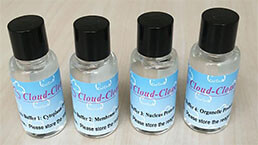 Lysis Buffer Specific for ELISA / CLIA
Lysis Buffer Specific for ELISA / CLIA
-
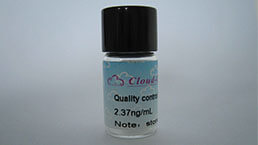 Quality Control of Kit
Quality Control of Kit
-
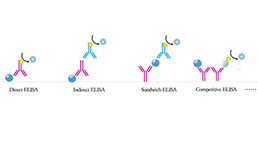 ELISA Kit Customized Service
ELISA Kit Customized Service
-
 Disease Model Customized Service
Disease Model Customized Service
-
 Serums Customized Service
Serums Customized Service
-
 TGFB1 Activation Reagent
TGFB1 Activation Reagent
-
 Real Time PCR Experimental Service
Real Time PCR Experimental Service
-
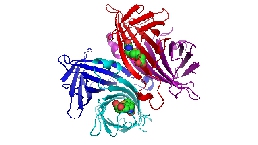 Streptavidin
Streptavidin
-
 Fast blue Protein Stain solution
Fast blue Protein Stain solution
-
 Single-component Reagents of FLIA Kit
Single-component Reagents of FLIA Kit
-
 Streptavidin-Agarose Beads
Streptavidin-Agarose Beads
| Magazine | Citations |
| Respiratory Physiology & Neurobiology | Kinetics of plasma SPB and RAGE during mechanical ventilation in patients undergoing major vascular surgery PubMed: 21736957 |
| American Journal of Rhinology & Allergy | Detection of surfactant proteins A, B, C, and D in human nasal mucosa and their regulation in chronic rhinosinusitis with polyps PubMed: 23406594 |
| 19 | Surfactant protein B and RAGE increases in the plasma during cardiopulmonary bypass: a pilot study PubMed: 20650982 |
| Plos one | Staphylococcus aureus and Pseudomonas aeruginosa Express and Secrete Human Surfactant Proteins PubMed: PMC3551896 |
| Plos one | The Detection of Surfactant Proteins A, B, C and D in the Human Brain and Their Regulation in Cerebral Infarction, Autoimmune Conditions and Infections of the CNS PubMed: PMC3787032 |
| Cancer Cell. | Lung Cancer Signatures in Plasma Based on Proteome Profiling of Mouse Tumor Models PubMed: PMC3406925 |
| Respir Physiol Neurobiol | Acute high-altitude exposure reduces lung diffusion: Data from the HIGHCARE Alps project Pubmed: 23619193 |
| PLOS ONE | Surfactant-Derived Proteins as Markers of Alveolar Membrane Damage in Heart Failure Pubmed:25514679 |
| Nachweis und Charakterisierung des Oberfl?chenproteins PLUNC (Palate, Lung and Nasal Clone Protein) an der Augenoberfl?che und Bedeutung für das Trockene Auge Opus4:Source | |
| Int J Cardiol | Plasma immature form of surfactant protein type B correlates with prognosis in patients with chronic heart failure. A pilot single-center prospective study PubMed: 26310985 |
| Plos One | Serum Levels of Surfactant Proteins in Patients with Combined Pulmonary Fibrosis and Emphysema (CPFE) Pubmed:27337142 |
| PLoS One | The Cerebral Surfactant System and Its Alteration in HydrocephalicConditions. pubmed:27656877 |
| Frontiers in Aging Neuroscience | Correlations of Ventricular Enlargement with Rheologically Active SurfactantProteins in Cerebrospinal Fluid. pubmed:28101052 |
| Frontiers in Aging Neuroscience | Correlations of Ventricular Enlargement with Rheologically Active Surfactant Proteins in Cerebrospinal Fluid PMC5209370 |
| Respiratory Physiology & Neurobiology | Diving and pulmonary physiology: surfactant binding protein, lung fluid and cardiopulmonary test changes in professional divers pubmed:28467885 |
| Cellular Physiology and Biochemistry | Surfactant Protein B Suppresses Lung Cancer Progression by Inhibiting Secretory Phospholipase A2 Activity and Arachidonic Acid Production pubmed:28743125 |
| American Journal of Physiology. Lung Cellular and Molecular Physiology | Chronic lung injury and impaired pulmonary function in a mouse model of acid ceramidase deficiency. pubmed:29167126 |
| Respiratory research | Effects and molecular mechanisms of intrauterine infection/inflammation on lung development Pubmed:29747649 |
| Respiratory Physiology & Neurobiology | Surfactant proteins changes after acute hemodynamic improvement in patients with advanced chronic heart failure treated with Levosimendan Pubmed:29548887 |
| Lung | Serum Surfactant Protein Levels in Patients Admitted to the Hospital with Acute COPD Exacerbation Pubmed:29445934 |
| American Journal of Physiology Lung Cellular andMolecular Physiology | Generation of an alveolar epithelial type II cell line from induced pluripotent stem cells Pubmed: 30211653 |
| Respiratory Research | Culture of human alveolar epithelial type II cells by sprouting Pubmed: 30340591 |
| Catalog No. | Related products for research use of Mus musculus (Mouse) Organism species | Applications (RESEARCH USE ONLY!) |
| RPB622Mu01 | Recombinant Surfactant Protein B (SP-B) | Positive Control; Immunogen; SDS-PAGE; WB. |
| PAB622Mu01 | Polyclonal Antibody to Surfactant Protein B (SP-B) | WB; IHC |
| LAB622Mu71 | Biotin-Linked Polyclonal Antibody to Surfactant Protein B (SP-B) | IHC |
| SEB622Mu | ELISA Kit for Surfactant Protein B (SP-B) | Enzyme-linked immunosorbent assay for Antigen Detection. |
| LMB622Mu | Multiplex Assay Kit for Surfactant Protein B (SP-B) ,etc. by FLIA (Flow Luminescence Immunoassay) | FLIA Kit for Antigen Detection. |

